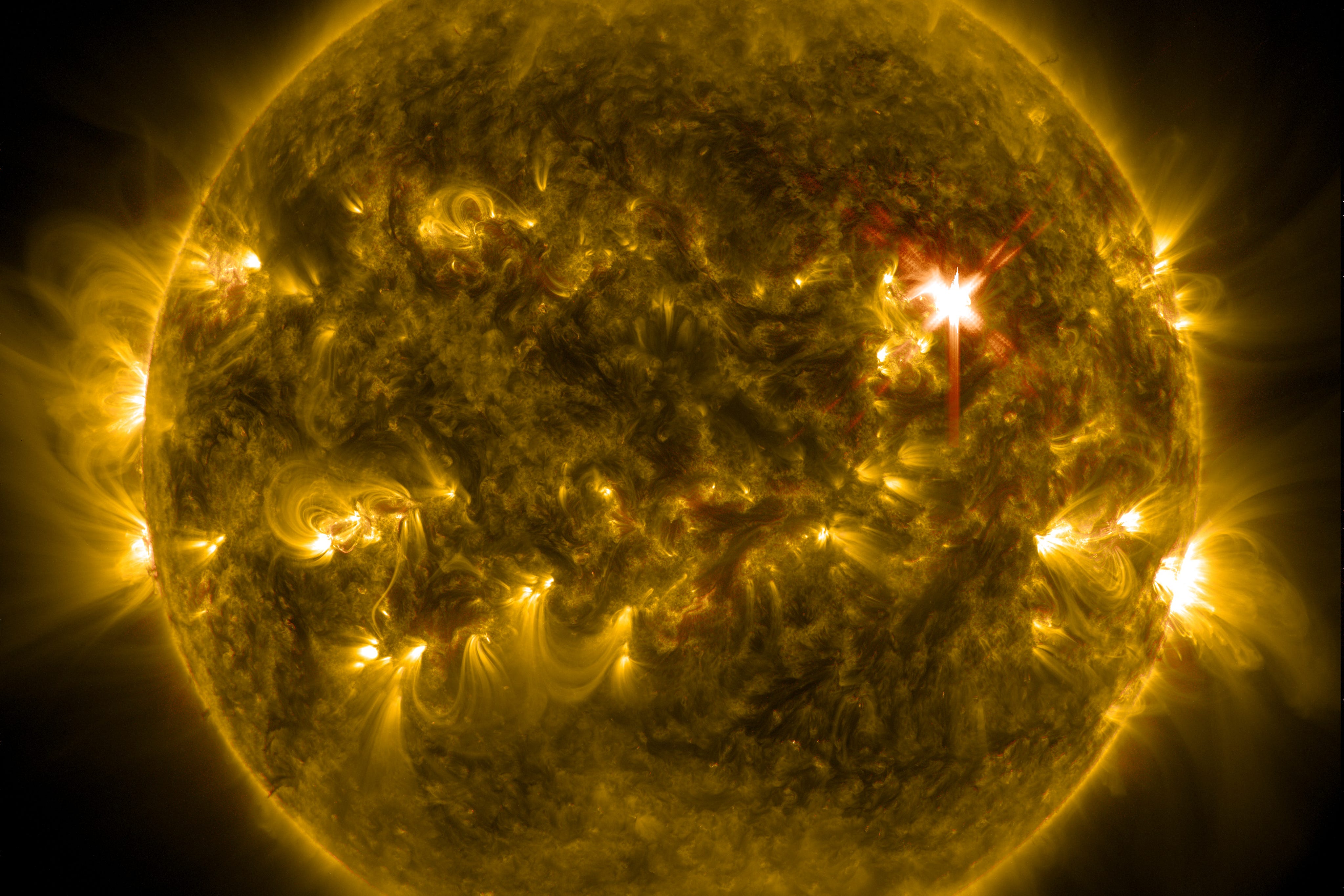Study sheds new light on potential impact of late-phase solar flares on Earth
Experts say their findings raise concerns about the broader implications of solar activity on the technology people depend on.

Your support helps us to tell the story
From reproductive rights to climate change to Big Tech, The Independent is on the ground when the story is developing. Whether it's investigating the financials of Elon Musk's pro-Trump PAC or producing our latest documentary, 'The A Word', which shines a light on the American women fighting for reproductive rights, we know how important it is to parse out the facts from the messaging.
At such a critical moment in US history, we need reporters on the ground. Your donation allows us to keep sending journalists to speak to both sides of the story.
The Independent is trusted by Americans across the entire political spectrum. And unlike many other quality news outlets, we choose not to lock Americans out of our reporting and analysis with paywalls. We believe quality journalism should be available to everyone, paid for by those who can afford it.
Your support makes all the difference.Solar flares in their later stages have a greater potential to disrupt Earth’s communication systems than previously thought, new research suggests.
It is widely known that the main phase of a solar flare, a sudden event on the Sun that releases a burst of energy, can cause disruption to GPS signals and trigger radio blackouts across the globe.
The new study found that the less-studied secondary emission known as the EUV (Extreme Ultraviolet) late phase could be equally as disruptive to communication and satellite systems.
Studies have indicated that the illuminated part of the Earth’s ionosphere is extremely sensitive to variations in solar radiation fluxes, which can cause failures in technology that people rely on daily
The findings suggest that the energy in this late phase can potentially exceed that of the main phase due to its longer duration, leading to a more prolonged impact on the ionosphere – a very active part of the atmosphere, which grows and shrinks depending on the energy it absorbs from the Sun.
Experts say this raises concerns about the broader implications of solar activity on the technology people depend on.
Corresponding author, Dr Susanna Bekker from the School of Mathematics and Physics at Queen’s University Belfast, said: “The study of the influence of solar flares on the Earth’s upper atmosphere, known as the ionosphere, remains to be a significant focus.
“Studies have indicated that the illuminated part of the Earth’s ionosphere is extremely sensitive to variations in solar radiation fluxes, which can cause failures in technology that people rely on daily.”
We believe that further study of the complex dynamics of ionospheric layers due to changes in the Sun’s behaviour is necessary to improve the accuracy of modelling and forecasting such events
Co-author, Dr Ryan Milligan, also from Queen’s University Belfast, added: “The insights gained from this research may also be applicable to the study of planets around other stars.
“We believe that further study of the complex dynamics of ionospheric layers due to changes in the Sun’s behaviour is necessary to improve the accuracy of modelling and forecasting such events.”
Recent findings have shown that a large proportion of solar flares have an EUV late phase, whose influence is not yet as clear.
Solar flares are classed in relation to how powerful they are and their potential impact on Earth.
During more powerful events, the effect on the ionosphere is much higher, therefore the late phase can also have a negative impact on the accuracy of navigation systems and the stability of radio communications
An X flare is considered the most aggressive.
Researchers looked at data from previous X-class flares to analyse the solar radiation and how the ionosphere responded to an EUV late-phase flare.
Dr Bekker explained: “During more powerful events, the effect on the ionosphere is much higher, therefore the late phase can also have a negative impact on the accuracy of navigation systems and the stability of radio communications.”
The findings are published in the The Astrophysical Journal.